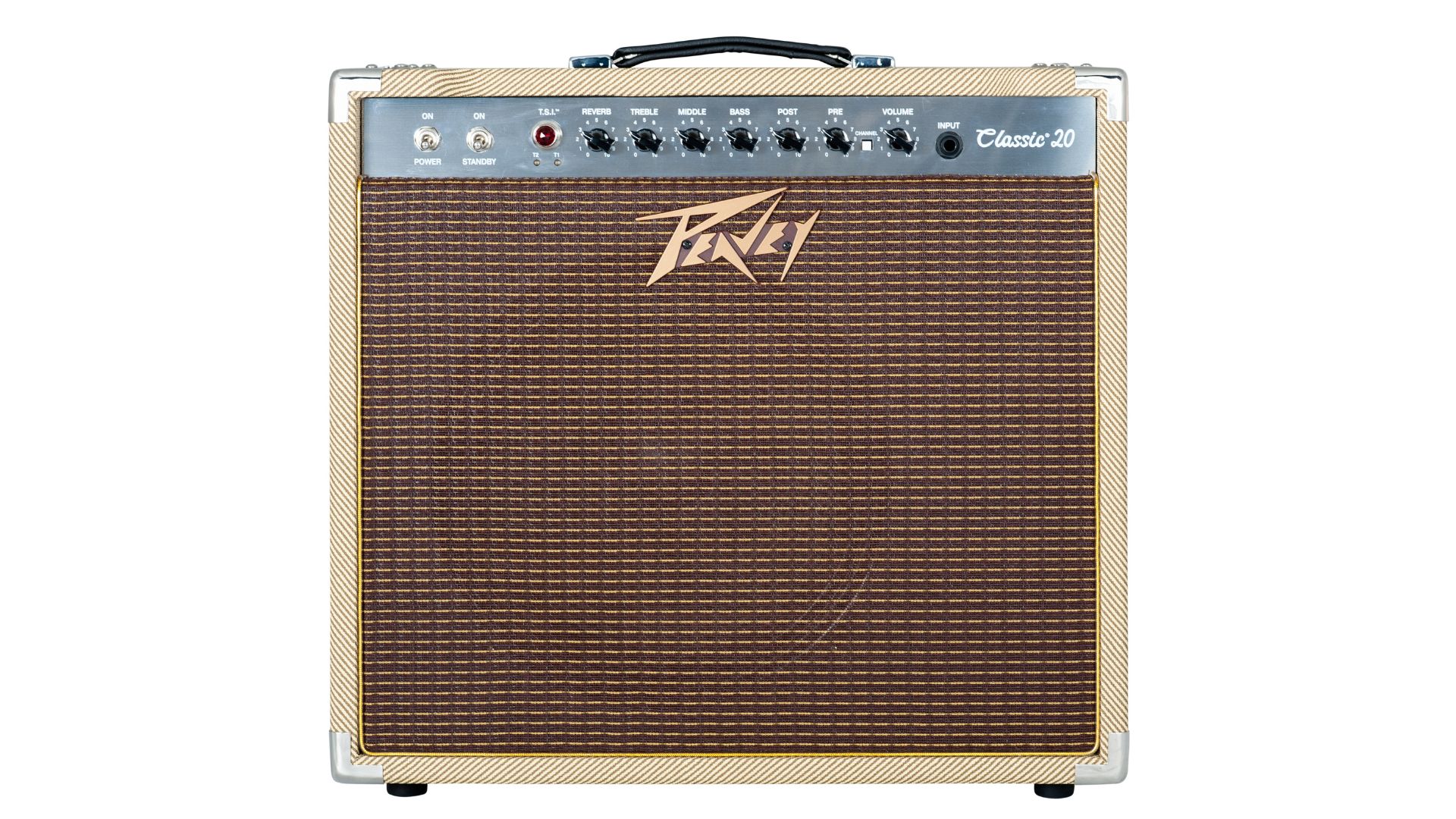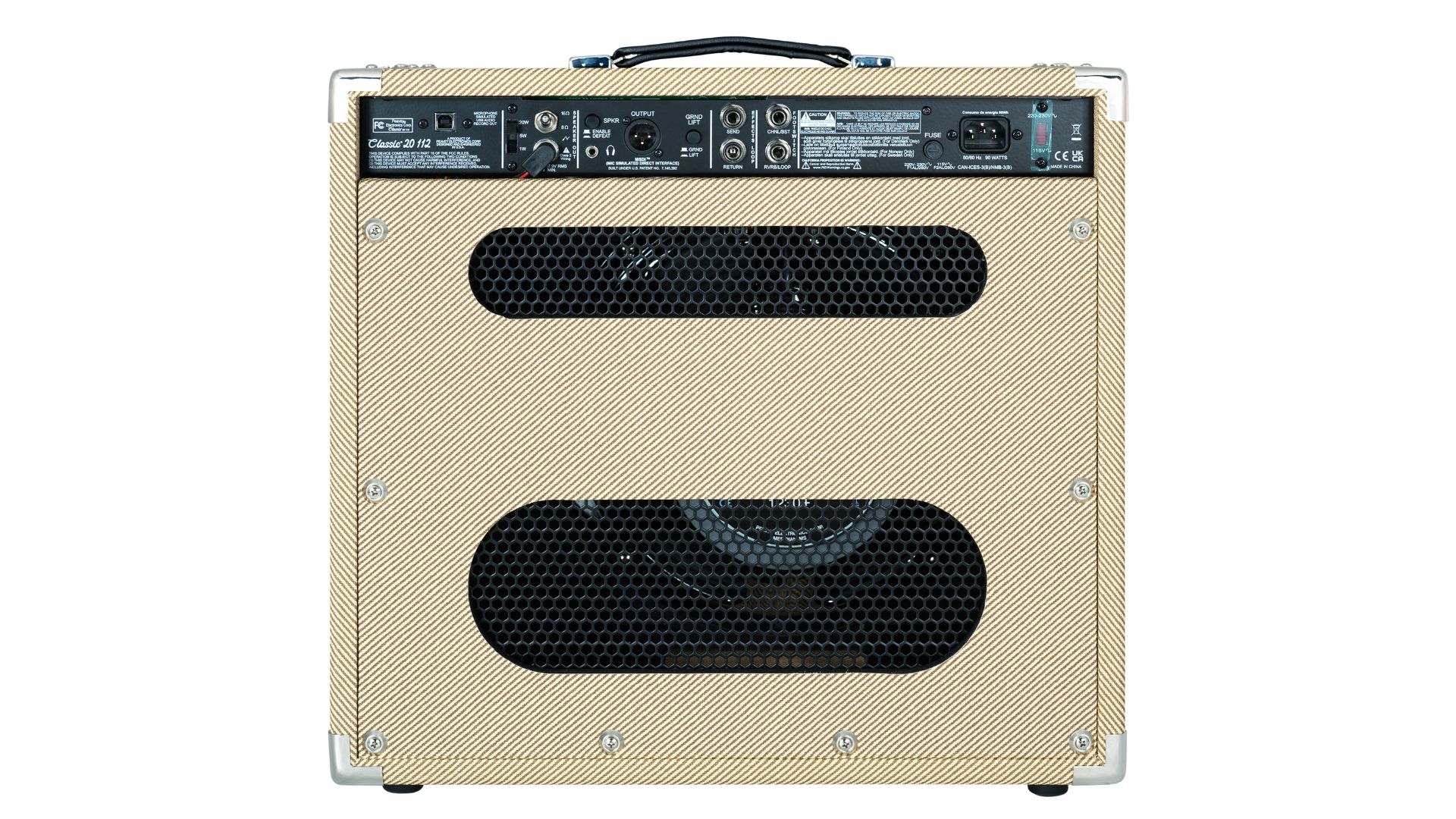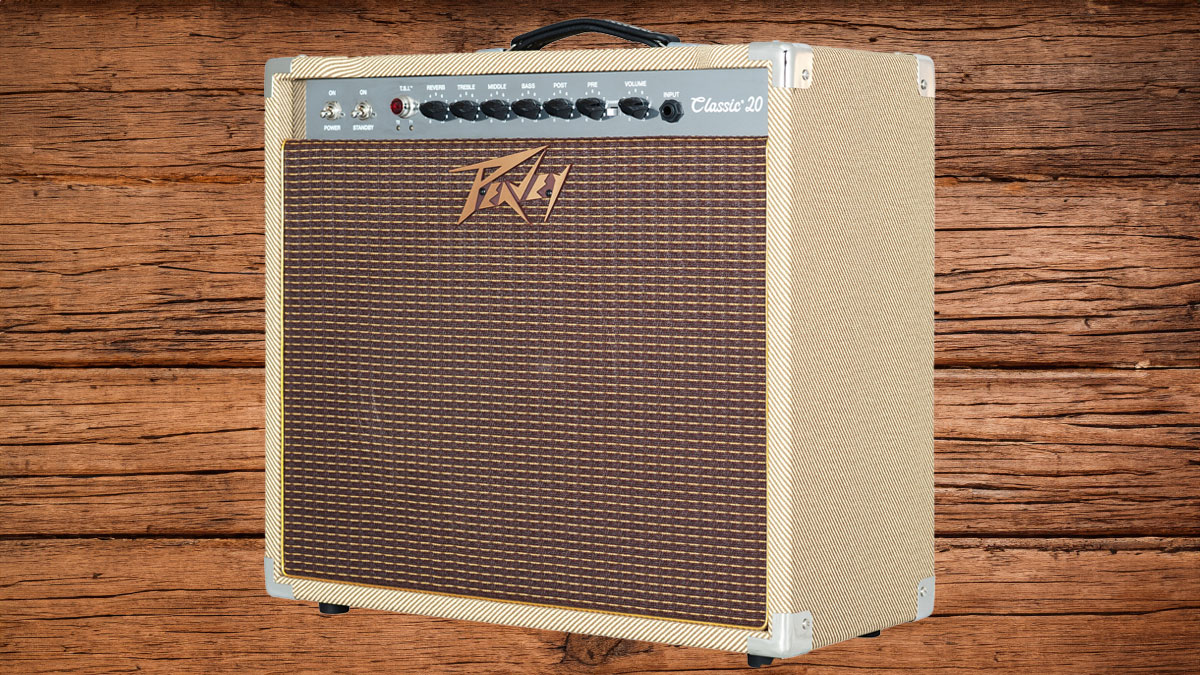Guitar World Verdict
With its two-channel design that delivers pristine clean and aggressive overdrive/distortion tones, both with boost, the Classic 20 112 is a highly attractive and affordable working class amp with an impressive variety of useful additional features.
Pros
- +
Lush-sounding digital reverb.
- +
Affordable.
- +
Direct USB and XLR outputs with mic simulation.
- +
Easy to dial in levels for channels 1 and 2 without affecting tone or gain.
Cons
- -
Shared EQ for both channels.
- -
Need to purchase additional footswitch controller to engage channel/boost and reverb/fx loop.
- -
Plastic footswitch controller and short power cable.
You can trust Guitar World
When Peavey introduced their Classic series tube amps in the Seventies, the models were inspired by classic Fifties and Sixties designs but featured original circuits and features. Now that Peavey Classic amps have been around for five decades and evolved over the years, they’ve become classics in their own right.
The Peavey Classic 50 was a mainstay of Peavey’s guitar amp lineup for many decades, but recently the company has revamped the series with some downsizing (the good kind). Currently, the Peavey Classic series consists of the Classic 30 112 combo, Classic 20 MH mini head and their newest entry, the Classic 20 112 combo, which is the model we auditioned here.
With its vintage-style tweed cloth covering and oxblood-color grill cloth, the Classic 20 112 retains the vintage visual styling of Peavey’s popular Classic amp models from the Nineties. However, whereas those versions had top-facing controls like a Fifties Fender tweed amp, the Classic 20 112 features front-facing controls that are preferred by most modern players.
The all-tube preamp and power sections are driven by three 12AX7 and two EL84 tubes, respectively, to deliver a conservatively rated 20 watts of output. Two LEDs located below the large jewel pilot light monitor the condition of the power tubes, illuminating green when everything is A-OK and red when a tube needs replacement.
The Classic 20 112 is a two-channel amp with a single EQ (bass, middle, treble) section shared by both channels. There’s also a footswitch-controlled boost function that increases the output of each channel. The shared EQ means you won’t be able to switch from mid-heavy clean to scooped-mid distortion, but it’s perfectly fine for players who prefer to dial in a solid clean tone embellished with different levels of gain.

The Pre knob allows users to shape channel 2’s gain from overdrive crunch to sizzling distortion, and the Post knob adjusts channel 2’s overall output level without adding overdrive or distortion (like a master volume).
A digital reverb effect with a depth control and a buffered effects loop are shared by both channels, and the reverb and effects loop can be individually switched on or off via a footswitch.
Peavey includes a two-button footswitch with the amp that can be connected either to the Channel/Boost jack (footswitch one switches channels, footswitch two engages boost) or the Reverb/Loop jack (with one controlling reverb on/off and two engaging the loop). An additional two-button footswitch is available from Peavey for $44.99.

The rear panel is loaded with useful features uncommon on many amps in the Classic 20’s price range. These include a 1-/5-/20-watt attenuator switch, USB and XLR outputs each with Peavey’s Microphone Simulated Direct Interface emulation, a 1/8-inch headphone jack, a speaker defeat switch and a Ground Lift switch.
The cabinet houses a single Peavey Sheffield 1230+ 12-inch speaker, and an 8-/16-ohm impedance switch allows users to pair the amp with a single external speaker cabinet as an option to the internal speaker.
The Classic 20’s tones are very solid and working class, perhaps lacking the finesse of much more expensive tube amps but still providing a good base for most styles of music as well as an attractive foundation for a pedal-based rig.

Channel 1 is clean, clean, clean, generating only a hint of overdrive with the main volume control cranked way up. At the full 20-watt setting, this amp is very loud and can easily compete output-wise with many 50-watt amps – something to consider if you’re looking for a compact, light amp for a club gig.
At a price that’s only a penny below $1,000, it’s packed with an impressive variety of useful features
At a price that’s only a penny below $1,000, it’s packed with an impressive variety of useful features, although some details like the plastic footswitch controller and included power cable that measures only a scant five-feet in length aren’t quite as ready for the stage as many players would like.
Fortunately, those details can be replaced easily and for a modest investment. If you’re looking for a robust meat-and-potatoes amp that can survive daily gigs, perform well in the studio and doesn’t cost an arm and a leg, the Peavey Classic 20 112 is a very worthy contender.
Specs
- PRICE: $999.99
- TYPE: Tube combo
- POWER: 20W (switchable to 5W and 1W)
- CHANNELS: 2
- CONTROLS: Reverb, Treble, Middle, Bass, Post, Pre, Volume
- FEATURES: Footswitchable channels, volume boost, reverb and buffered effects loop; Tube Status Indication (T.S.I.) circuit, USB out, speaker defeat switch, headphone output
- SPEAKER: 1x 12"16 Ohm Peavey Sheffield 1230+
- CONTACT: Peavey
Chris is the co-author of Eruption - Conversations with Eddie Van Halen. He is a 40-year music industry veteran who started at Boardwalk Entertainment (Joan Jett, Night Ranger) and Roland US before becoming a guitar journalist in 1991. He has interviewed more than 600 artists, written more than 1,400 product reviews and contributed to Jeff Beck’s Beck 01: Hot Rods and Rock & Roll and Eric Clapton’s Six String Stories.
“I liked that they were the underdogs. It was not the mainstream guitar. It was something that was hard to find”: Vox guitars deserve a second look – just ask L.A. Witch’s Sade Sanchez, who’s teaming hers with ugly pedals for nouveau garage rock thrills
“I suppose I felt that I deserved it for the amount of seriousness that I’d put into it. My head was huge!” “Clapton is God” graffiti made him a guitar legend when he was barely 20 – he says he was far from uncomfortable with the adulation at the time
“I was in a frenzy about it being trapped and burnt up. I knew I'd never be able to replace it”: After being pulled from the wreckage of a car crash, John Sykes ran back to his burning vehicle to save his beloved '76 Les Paul












